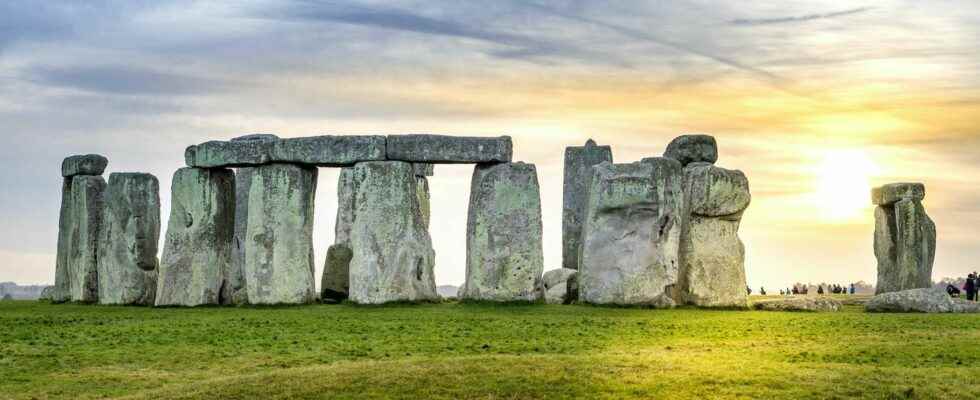You will also be interested
[EN VIDÉO] Rare prehistoric deer carvings found in Scotland A series of rock-carved stags dating from the Early Bronze Age or Neolithic were found by chance at the Kilmartin Glen site.
Stonehenge is a name well known to enthusiasts of human evolution. This megalithic monument is located in the south of England and was erected in the Bronze Age, between 3,700 and 1,600 years BC. The international influence of this monument comes from the fact that it is particularly visible in middle of a plain and that it is to this day the stone circle the most sophisticated prehistoric monument in the world, from an architectural point of view. Its total diameter is about 300 meters but it is the central elements that are undoubtedly the most impressive part for the public.
Charred human bones were found there in its outermost area
Megaliths are indeed erected there and the precise pose in lintel of some of them weighing several tens of tons is an architectural feat. This site has probably undergone a complexification during the two millennia during which it was used. It was probably a site of prehistoric ceremonies and a mortuary site because charred human bones were found there in its outermost area.
A clearing and an ambush place
The history of the landscape around Stonehenge is therefore largely overshadowed by the period following the construction of this monument. However, researchers have wondered what the activities of prehistoric men were during the pre-Neolithic period, when no megaliths had yet been erected by agricultural populations. In a study published in the log PLoS Oneresearchers point out that a long debate is rage as to the nature of the landscape which preceded the advent of Stonehenge.
Was this landscape characterized by uninhabited forests or, on the contrary, was it already partially open and traveled by Neolithic hunter-gatherers? To answer this question, the authors analyzed the data DNA of plants, the pollenas well as geology and the geochemistry of the Blick Mead complex near present-day Stonehenge, which was a site occupied by one of the last groups of hunter-gatherers in this area.
The authors explain that the site of Blick Mead was, at the end of the Mesolithic, in a clearing surrounded by hardwood such as apple trees, Tilia, elms, dogwoods and poplars. This was traversed by deerfrom aurochs and hunter-gatherers who have exploited it for nearly 4,000 years. It also appears that this semi-open environment was important for the survival of the nomads but also for that of the first builders of Stonehenge in the Neolithic and that a continuity existed between the activities of these two types of occupants.
The authors indicate that the grazing activity of large ungulates must have maintained this semi-open environment, particularly near watercourses. In addition, remains of cut auroch bones attest to the presence of hunters at Blick Mead. This site was indeed a strategic place to ambush the aurochs who came to quench their thirst throughout the Mesolithic.
Interested in what you just read?
